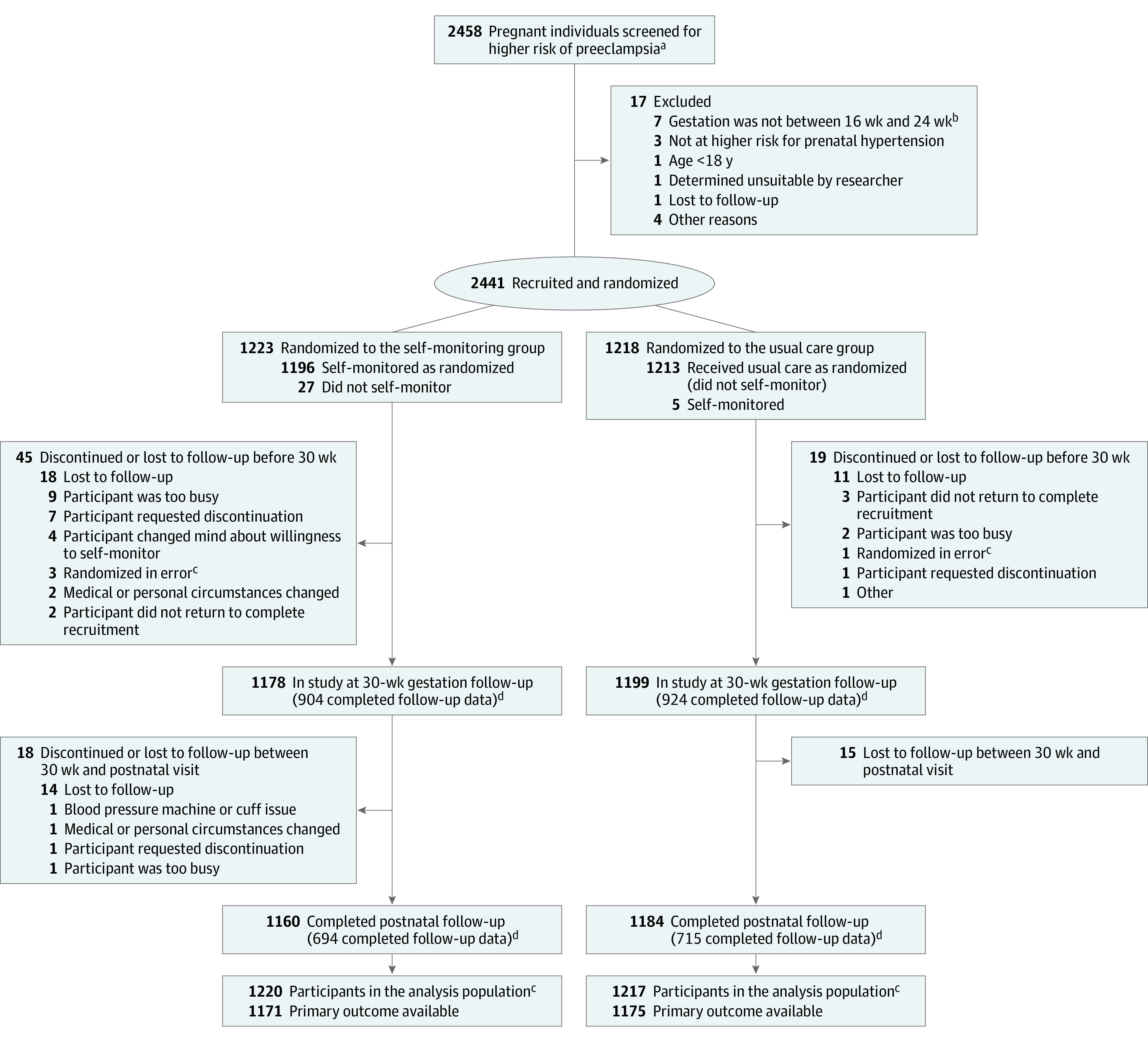Figure. Eligibility, Randomization, and Data Availability for Self-monitoring for Hypertension Among Pregnant Individuals at Risk for Preeclampsia.

aScreening was conducted by research midwives reviewing clinical notes; therefore, the number of potentially suitable participants may underrepresent the true number. Higher risk of preeclampsia was defined by the relevant UK guidance at the time and included 1 or more of the following risk factors for pregnancy hypertension5: age ≥40 years with a nulliparity pregnancy interval >10 years, family history of preeclampsia, history of preeclampsia or gestational hypertension, body mass index of ≥30 (calculated as weight in kilograms divided by height in meters squared), any stage of chronic kidney disease, twin pregnancy, prepregnancy diabetes, and autoimmune disease (eg, systemic lupus erythematosus or antiphospholipid syndrome).
bIndicates 16 weeks 0 days to 24 weeks 0 days.
cIndividuals who were randomized in error (3 in the self-monitoring group and 1 in the usual care group) were excluded from the analysis population.
dFollow-up numbers include individuals eligible to be followed up (ie, not withdrawn or lost to follow-up) who completed questionnaires at that time. All available data were included in the analyses but some were available at only 1 follow-up point. For the self-monitoring group (n = 1223), 615 participants completed both 30-week and postnatal follow-up, 289 completed only 30-week follow-up, 79 completed only postnatal follow-up, and 240 completed neither follow-up. For the usual care group (n = 1218), 636 participants completed both 30-week and postnatal follow-up, 288 completed 30-week follow-up, 79 completed only postnatal follow-up, and 215 completed neither follow-up.
